Being a Disney Parks fan isn’t always easy. On top of handling annual price hikes, disappearing perks, closing classics, reduced portion sizes, and merch resellers, following “Disney Parks” news can be… complicated! With retiring stars and new names coming in and out of the conversation every year, it can be hard to keep up with “Who’s Who” in the what’s what of the Mouse House.
We’re here to help! Today, we’ll take a look at several of the big name figures you’ve got to know if you stand a chance at understanding Disney Parks news… and the rumors, complaints, credit, and blame that’s always a part of the conversation…
While it’s impossible to profile every significant figure at the Walt Disney Company, Disney Parks, Experiences and Products division, or Walt Disney Imagineering, hopefully this guide adds a little context to the next big story or must-follow figure you hear about!
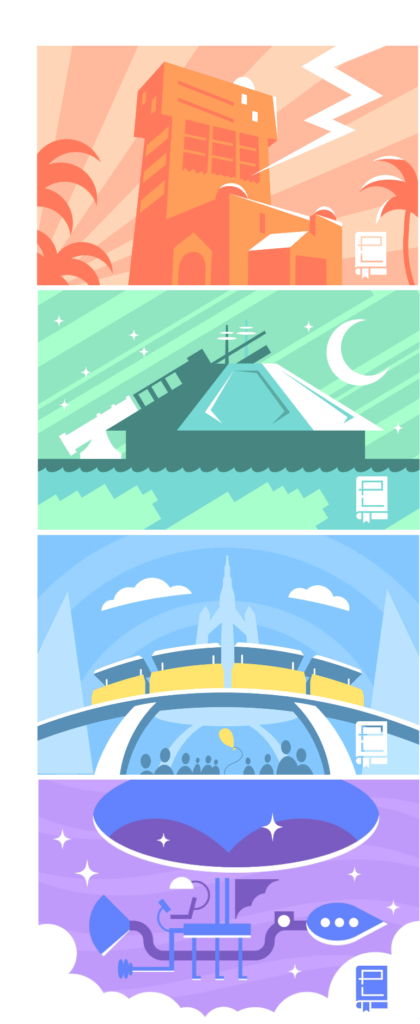
Do you love armchair Imagineering, in-depth storytelling, and seeing the theme parks we love differently? Park Lore is an ad-free, quality-over-quantity, one-person project centered on building a world-class collection of the interconnected stories of theme park attractions, design projects, and industry explorations.
This feature is one that’s usually locked in our Member Vault, where Park Lore patrons can find hand-drawn art, armchair Imagineering walkthroughs, and other in-depth Special Features, as well as quick-read, just-for-fun Extra Features. Thanks to supporting Members, this feature is temporarily unlocked as a preview!
But if you value my mission to provide clickbait-free, ad-free deep dives and new ways to see the parks, consider becoming a supporting Member of Park Lore for as little as $2 / month. That support is what keeps this unique themed entertainment storytelling project open, ad-free, and available to all. Thank you!
Walt Disney Company Executive Leadership
Bob Iger
Executive Chairman (Retired)

The first face on our “Who’s Who” list is officially retired as of January 1, 2022… but the shadow of Bob Iger looms too large across The Walt Disney Company to move him to our “Gone But Not Forgotten” page quite yet…
According to his own autobiography, The Ride of a Lifetime, Iger began his “entertainment” career in 1974, as a go-fer at ABC (earning just $150 a week) with dreams of being a weatherman. Gradually, however, he worked his way up to a Senior Program Executive at ABC in the ‘80s. Progressive positions with the entertainment broadcaster eventually saw Iger elevated to President and Chief Operating Officer of Capital Cities – ABC’s parent company – in 1994… just in time for Michael Eisner’s Walt Disney Company to buy Capital Cities in 1995 – a staggering, unprecedented, $19 billion media acquisition for the era.
Iger remained President of the acquired Capital Cities until 1999, when he took over Disney’s international business unit and became Chairman of ABC. In 2000, he was elevated to Chief Operating Officer of the entire Walt Disney Company – Eisner’s number two position, vacated by the infamous (and costly) departure of Michael Ovitz after just 16 months in the role.
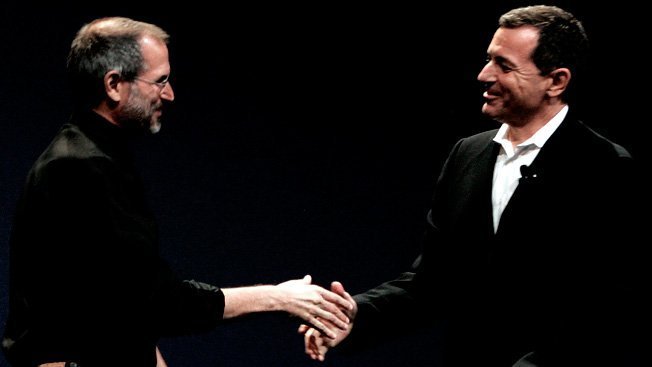
When Michael Eisner left Disney in 2004 (before the end of his contract) and after a protracted internal debate about succession, Iger was elevated into his role, becoming Chief Executive Officer of The Walt Disney Company. Mere months after assuming the CEO role, Iger announced that Disney would purchase Pixar (whom Eisner had largely made an enemy of) for a staggering $7.4 billion – one of the largest acquisitions in the company’s history, and especially brazen for a brand new leader. (It also made Apple co-founder and Pixar owner Steve Jobs into Disney’s largest shareholder.)
Of course, it was just the beginning. Iger’s tenure is marked by similarly massive intellectual property acquisitions of Marvel ($4 billion) and Lucasfilm ($4 billion), plus the once-unthinkable purchase of another of the “Big Six” film studios, 21st Century Fox ($71.3 billion). In other words, though Michael Eisner definitely began Disney’s growth into a global media company, Iger arguably oversaw that journey’s peak, masterfully setting Disney up for the “IP Wars” we find ourselves in today. (Imagine Disney without Marvel, Star Wars, Pixar, or National Geographic…)

In the parks, Iger presided over an era of spectacular expansion during which the company’s theme parks were one battlefront in the “IP Wars.” The era of “Living Lands” – like Toy Story Land, Cars Land, Galaxy’s Edge, Pandora, and Avengers Campus – has been entirely contained within Iger’s tenure. Iger also oversaw the costly response to the decade of underfunded parks he inherited, greenlighting the remaking of Disney California Adventure (above, with Tom Staggs), Walt Disney Studios Paris, and Hong Kong Disneyland. Only one new Disney Park opened during Iger’s tenure…
If Disneyland Paris had been the expected legacy marker of Disney’s last CEO, then 2016’s Shanghai Disneyland was Iger’s. Located in the third most-populated city on Earth, Shanghai Disneyland was a living embodiment of the company’s longtime fliration with the world’s most populous nation (with over 1.2 billion citizens) and – most importantly – its emerging middle class… literally hundreds of millions of potential customers newly open to Disney’s Parks and Products. Though Iger reported in 2021 that his one-time optimism about China had been “eroded” by the communist country’s unpredictability (and its continual censorship of Disney films), the park remains one of the landmarks of Iger’s time as CEO.
Famously tending toward the creative side of the business, Iger is largely viewed as a leader who went with his gut, making big, bold, and splashy acquisitions, empowering creators, greenlighting big budget projects, and insisting on quality over quick returns. (Notice it’s been a while since Disney’s last direct-to-video sequel or underbuilt theme park.) A big believer in the danger of what Steve Jobs called “brand withdrawals,” Iger is well regarded for re-elevating the Disney brand, installing smart creatives in positions of power, and maintaining a consistency across the growing company.
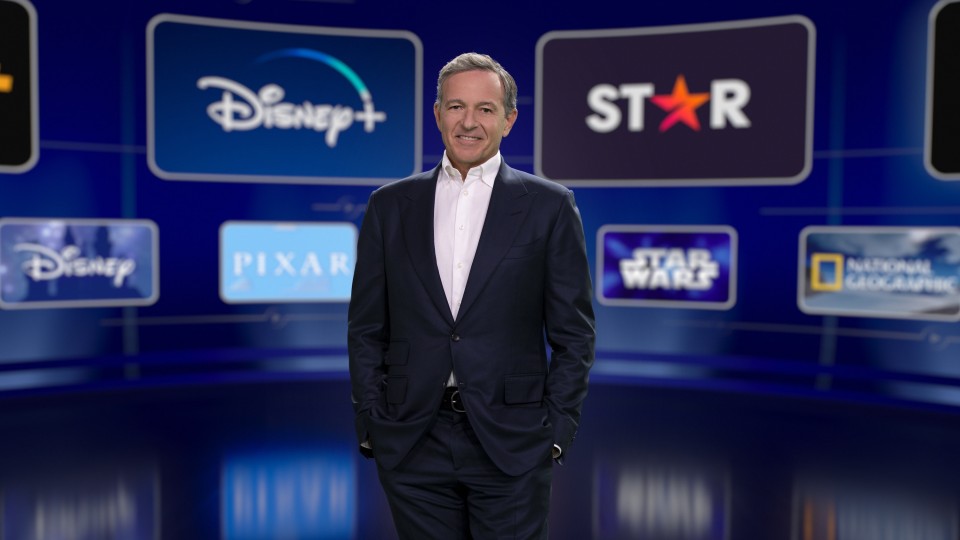
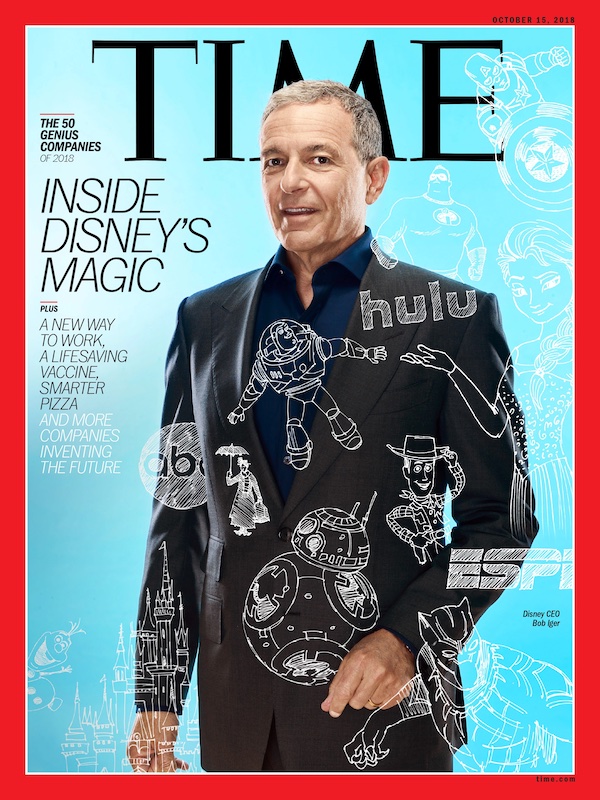
His legacy is enshrined forever by his acqusitions of Pixar, Marvel, and Star Wars, the opening of Shanghai Disneyland, the $70 billion purchase of 20th Century Fox, and the launch of Disney+.
Iger was initially set to retire at the end of his contract in 2016. Two candidates – Tom Staggs (Chairman of Parks & Resorts) and Jay Rasulo (Chief Financial Officer) – were believed to be Iger’s top picks to succeed him. He even had the two executives swap roles in the early 2010s, which industry commentators suspected was an attempt to broaden both candidates’ experience ahead of one of their ultimate selections. Ultimately, both Staggs and Rasulo left the company, leaving Iger without an appointed successor. His contract was extended to 2018, then 2019, then 2021.
The 68-year-old Iger unexpectedly announced that he was stepping down immediately (and 22 months before the end of his contract) from the CEO role on February 25, 2020 – probably not coincidentally, just as the reality of the encroaching COVID-19 pandemic became headline news. He agreed to stay on in a custom-made role – Executive Chairman – until December 31, 2021. One of his stated goals in the position was to handle the “creative” end of the business while coaching and mentoring his replacement, whose experience in the “creative” is… well… suspect…
Bob Chapek
Chief Executive Officer (CEO)
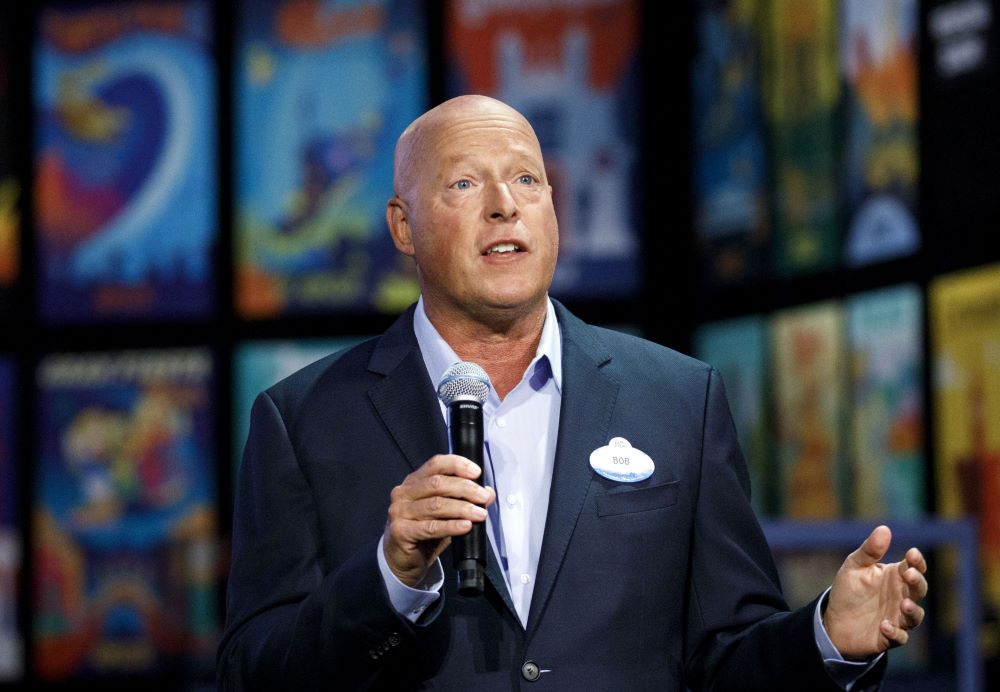
Bob Chapek is a pretty stark contrast to Bob Iger. Chapek has been with Disney just as long – 26 years – but his experience is much more rooted in content distribution as opposed to content development you might find at the Studios or Parks. As President of Buena Vista Home Entertainment, Chapek oversaw Disney and ABC home media releases, navigating the transition from VHS to DVD. (The “Disney Vault” promotional strategy – where films ceased home video production for years or decades to limit supply and make their home media re-releases headline news – is often credited to Chapek.)
In 2011, Chapek moved into his most often-discussed role as President of Disney Consumer Products (DCP). The DCP division was, of course, responsible for the manufacturing of Disney merchandise (think: toys, games, costumes, and other accessories) but – more importantly – licensing Disney’s characters and likenesses (think: Star Wars LEGO sets, Frozen Vitamins, Mattel Disney Princess dolls, Finding Nemo Crayola coloring books, Indiana Jones Funko Pops, and seemingly about ten trillion other licensing deals).
After Disney purchased Lucasfilm, Chapek’s DCP division became the most profitable merchandise licensor in the world. Given that DCP was a highly, highly important – but fairly un-sexy – division of Disney, Chapek didn’t register on many fans’ radar…
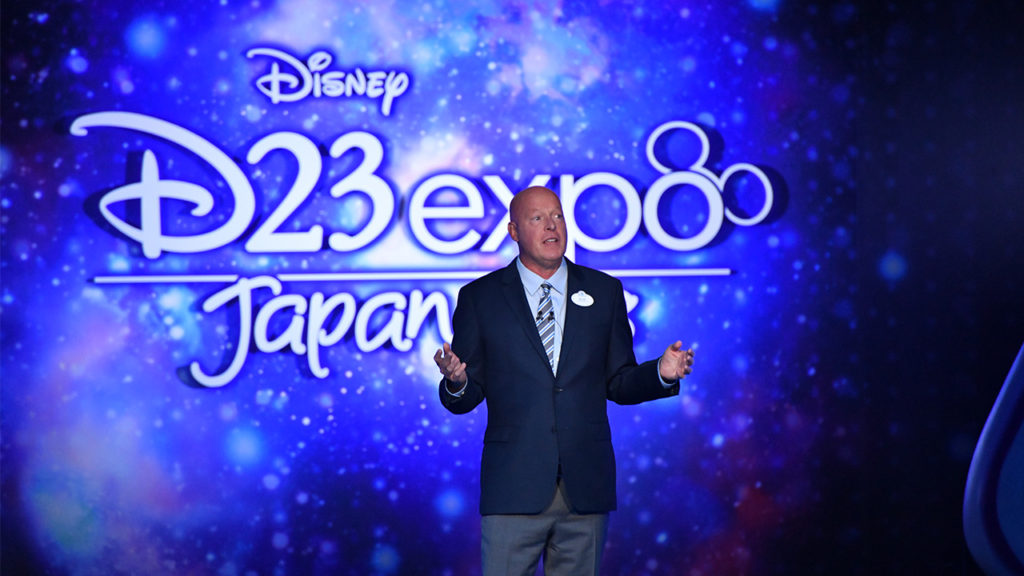
Then, in 2015, Tom Staggs announced his exit from the company (allegedly because the Board signaled he was not the shoe-in to replace Iger as CEO that he thought he was) and “effective immediately,” Chapek was named the new Chairman of Parks & Resorts. Given that Staggs had overseen the development of Disney’s Avatar and Star Wars lands plus Shanghai Disneyland, Chapek saw them through to completion. But among fans, the “numbers guy” from Consumer Products started his term on “thin ice.”
Insiders allege that it was Chapek was took control of the in-development Star Wars lands, deciding that regular ole’ Cast Members would be just as good at bringing the land to life as paid Equity actors that had once been envisioned, that live entertainment should be limited only to the land’s media debut, and that its planned third attraction and Animatronic-heavy dinner theater were too costly to actually install.
(Total opinion, but even when he represented Disney Parks at celebratory D23 Expos, there was never really a sense that Chapek specifically cared about the Parks, knew anything about them, or had a long-term vision for them. Instead, it felt like Chapek was dutifully trying to optimize the area of the company he’d been assigned to in the way he knew how – maximizing revenues and minimizing expenses while leveraging Disney’s brands, characters, partnerships, and products.)
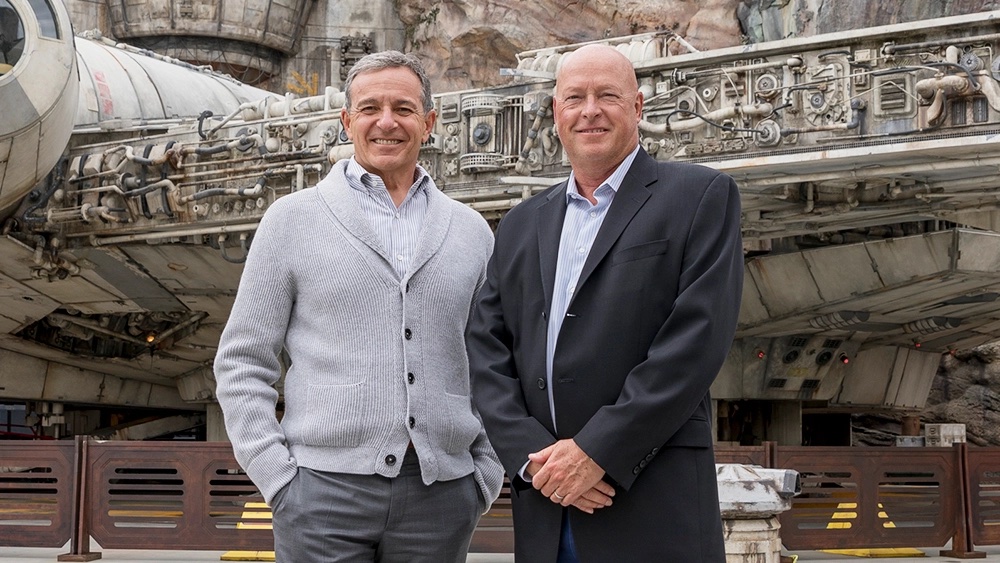
In 2018, Walt Disney Parks & Resorts was “fused” with Disney Consumer Products, leaving Chapek as the lead of a vaguely-nefarious, late-stage-capitalism-sounding combined division – Chairman of Disney Parks, Experiences, and Products (DPEP). Explicitly painting the theme parks as part of Disney’s retail strategy is a sort of a “saying-the-quiet-part-out-loud” embodiment of Chapek’s M.O. – parks as products, plussed by “cheap and cheerful” projects, quick character overlays, and lots of upcharges with per-capita spending as the division’s new key performance indicator.
Frankly, it’s not much a surprise given that Chapek’s background in content distribution has been mapped onto the parks. Our “Disney+ Parks“ Special Feature looks at the recent shift of Disney Parks from “spigots” that produce new characters, stories, and franchises to “buckets” that merely collect “Disney + Pixar + Marvel + Star Wars.” We could argue that that’s a pretty direct result of Chapek’s “upbringing” in the company.
Chapek was unexpectedly named Chief Executive Officer, “effectively immediately,” when Bob Iger stepped down in February 2020 – long envisioned as a “code red,” “worst case scenario” by many fans. Insiders allege that rather than sticking to the status quo as many (maybe including Bob Iger) hoped, Chapek raced headlong into the role by reducing the reach of many “Iger-loyalist” creatives, surrounding himself in financial advisors, and restructuring the entire company with content, licensing, and streaming as its core business.
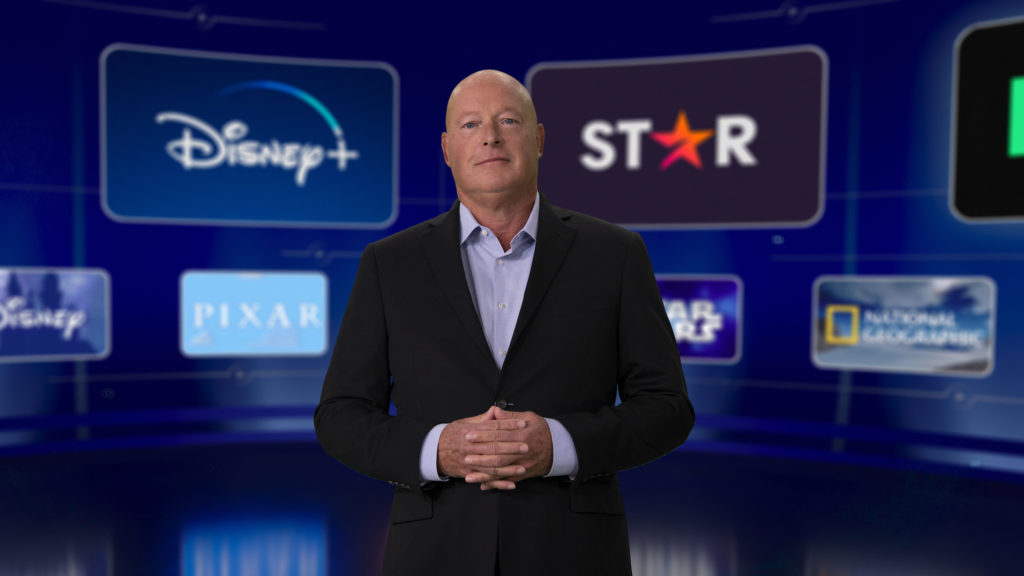
There’s no denying that Chapek is a very different leader and personality than Iger. Clearly less comfortable in the spotlight, Chapek comes off as much less self-assured and even defensive in interviews. He definitely drew the ire of fans when, at the opening of Star Wars: Galaxy’s Edge, an awkward, somewhat artificial, and almost-indignant Chapek infamously responded to gathered fans’ questions about Disney’s IP obsession by insisting:
“We don’t want to do anything that anybody else can do. A lot of times, people say ‘Why don’t you do something – why does everything have to be franchise oriented?’ […] Because if any of our competitors had our intellectual property, guess what they’d be doing? The same thing we’re doing. But they don’t have it. And we do.”
He’s also ruffled feathers in Hollywood and made several significant PR faux pas (see, Scarlet Johannsen, LGBTQ+ legislation, political donation policies) that insiders attribute to his lack of experience with the foward-facing sides of the business. In what many suggest is a thinly viewed repudiation of his own successor, Iger allegedly urged Disney’s leadership at a retreat not “to use data to answer all of our questions, including creative questions.”
Putting a “numbers guy” in charge of a fundamentally creative business will certainly be an interesting story to follow… In the meantime, we’ll zoom in further on the DPEP division…


